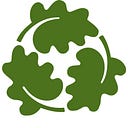Behind the Scenes at TreePeople’s Native Plant Nursery
Written by Bryan Medina, Southeast LA Community Organizer
Hey TreePeople,
Did you know that TreePeople has a native nursery at our hilltop headquarters?
We spoke with Nursery Manager, Jack Smith, to share the story of our nursery, its importance to our mountain restoration work, and what it’s like to work with native plants and trees!
How did you get started working at the nursery?
I started by volunteering and by the third time I helped out, I asked for more responsibilities. That’s when I moved on to mountain restoration events with TreePeople. Eventually, I got an entry-level job with Mountain Restoration Trust as a restoration technician. I learned from their restoration manager how to care for native plants and have been growing ever since.
What kind of plants and trees do you grow here? I noticed that they’re separated in different tables, why is that?
All the plants and tree saplings grown here are native to Southern California such as coast live oak (Quercus agrifolia), valley oak (Quercus lobata; editor’s note: the valley oak’s leaves inspired TreePeople’s logo!) and scrub oak (Quercus berberidifolia). These will eventually be planted in the Santa Monica Mountains or Angeles National Forest, depending on where we collected the seeds. The nursery benches are spaced at least two feet apart to prevent the potential transmission of harmful pathogens, like Phytophthora, that can kill vulnerable populations of California flora. It’s also for the safety of the nursery team when we’re lifting heavy trays of plants. The benches were raised to prevent water splashback that can transmit Phytophthora.
What do you do to prevent the spread of Phytophthora and other plant pathogens?
Containment is important to stop the spread of Phytophthora since it’s hard to stop its spread once it’s in the wild. We have to keep all our tools and PPE super clean. We spray our shoes with isopropyl alcohol, vacuum the gravel inside the nursery, wash surfaces with a 10% bleach solution, and steam soil to be used for our plants. TreePeople is participating in a pilot program to encourage more native plant nurseries to produce certified-clean plants. We operate the second nursery in LA to grow Phytophthora-free plant stock for the Forest Service.
Can you tell more about soil pasteurization? Why is it important to steam the soil?
Soil pasteurization helps ensure that the soil we mix is clean before it’s used and planted in the wildlands. Much like the COVID-19 protocols, we have to clean everything before we use it. There’s a quick video on the TreePeople Instagram (@treepeople_org) where I show the process. After the soil is mixed, we use a steam generator to heat it up. I take breaks to stir the soil to make sure I don’t burn it. It’s kind of like making soup but with soil!
What’s the most rewarding thing about running the nursery?
It’s definitely the little surprises and breakthroughs you discover every day. It’s a great feeling when you get to see something you’ve cared for go in the ground! Also, I’ve met so many amazing people who are working hard to save the planet. It’s a privilege to work in such a wonderful space and help take care of our local wilderness.
What makes California native flora so special and vulnerable?
The variety of climate zones combined with our topography and wilderness. Here in LA, we live in a Mediterranean climate where the ocean brings rain to the west side of the transverse mountain range. That combination brings us some unique plant life that have symbiotic relationships with the animals, like the scrub jay (Aphelocoma californica) and the coast live oak (Quercus agrifolia). Overdevelopment, increased frequency of wildfires and competition from invasive plants make our native wildlife vulnerable.
How can folks help to restore and preserve native plant life? Can they volunteer at the nursery?
If you have access to yard space, consider planting native plants for your very own super bloom! We are working to package ethically collected native seeds and trees to make them available for volunteers, staff, partners, and donors. I also highly recommend just reading up on our native wildlife by checking out resources from TreePeople, California Native Plant Society, the Theodore Payne Foundation, and many more of our partners. Try downloading the iNaturalist app to identify and learn more about native plants and animals.
Our nursery is run by a small team of highly trained volunteers. I hope in the near future to be able to expand our team to include more people who are dedicated to native plants and habitat restoration. Stay tuned! I will need more help soon.
What’s your favorite plant and why?
It’s usually something that I just learned to grow! Right now, it’s a tie between Toyon (Heteromeles arbutifolia) and mountain mahogany (Cercocarpus betuloides). We just grew a couple hundred of each!
Los Angeles-based TreePeople is the region’s largest environmental movement, whose mission is to inspire, engage and support people to take personal responsibility for the urban environment. Visit us at treepeople.org and learn how you can join our cause.
